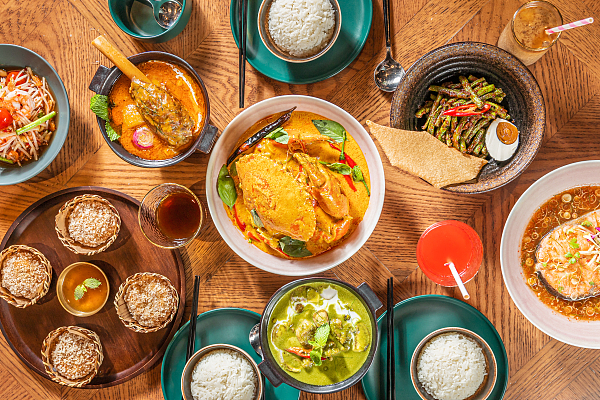
Emperor Qianlong witnessed the heyday of the Qing Dynasty (1644-1911), which had a stable political environment, developed economy and an unprecedentedly prosperous and booming food and beverage market.
One example is the Manchu eight bowls. As a dish combination, it is a key part of Manhanquanxi, a formal banquet combining Manchurian and Chinese delicacies.
The book Manchu Bannerman Sacrificial Ceremony records that the banquet uses five tripods and eight bowls to celebrate big events such as the New Year, traditional festivals and wedding ceremonies. The eight bowls serve dishes made by grilling, braising, stewing, stir-frying and steaming.
The Manchu eight bowls consist of eight kinds of ingredients including stir-fried small tofu with pickled vegetables, braised shrimp tofu and egg, grilled pork knuckle, roasted frog, chicken and mushroom powder, stewed food with pork, fried fish with tender leaves and Amazun meat.
Amazun meat, commonly known as Nurhachi golden meat, is a typical dish in Manhanquanxi. It is named after Nurhachi, the founding emperor of the Qing Dynasty.
A Brief History of Manchu records that Nurhachi seized control over the northeastern region and ordered erecting a pole to worship the heavens when there were military and other important events. According to Zhuye Pavilion Miscellaneous Notes, only pure black pigs can be chosen as sacrifices and immolated for the gods.







